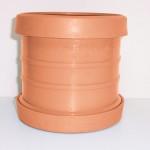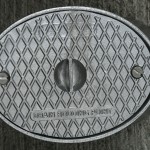DIY Drainage
This entry was posted on Dec 6, 2013 by speedy-bedDIY Yard Drainage Solutions
If you are getting a flooded yard, or even home, perhaps installing an in-ground drainage system is the answer? Firstly determine where the water’s coming, such as a slope in your yard causing pooling, or excess water from your gutters not draining away underground properly. Such pooling usually presents itself after a rainstorm. Excess water should generally absorb into a well drained lawn/yard within the hour. If your yard however is of poor condition, or in a state of disrepair, or uneven, it can all lead to water not dispersing correctly. Ensuring all repairs are carried out is a good first step. It also helps to direct the water as best you can towards any drains already in place.
Do you get flooded grass lawns? One of the biggest problems with poor lawn drainage is that most plants including turf lawn rest poorly in sitting water. The simple solution is to observe how the water gets to your lawn and how it then settles. Water simply follows gravity to the lowest point then when it can’t penetrate the soil it either runs away or gets trapped (pools). Large quantities of rainwater can trickle from elsewhere, such as your pathways, so firstly you need to make provisions to divert such flows away from your garden. If you’ve got clay in your soil then your lawn will be less permeable so simply rolling it with an aerator will help the soil to absorb the water.
French Drains DIY
French drain systems are a possible solution for drainage problems that occur on mainly flat yards and gardens. Traditionally built by digging trenches, and filling them with pipe work, covered in several layers of multi-size gravel, channeling the water in a certain direction usually to a mains drain. However nowadays French drain systems tend to use products made of plastic with perforations or slots in the pipework that’s placed at the bottom of the trenches, then covered in gravel to prevent debris getting in the pipes. This job could be carried out by a capable DIY’er or a specialist professional.
Lawn aeration can be achieved by regular rolling with an aerator to help your lawn soil absorb the rainwater and prevent pooling and soggy lawns. All your rainwater systems, and various other drainage areas should be checked regularly, especially during the winter months so that leaves etc don’t block such systems causing further damage. When doing any sweeping, or gardening etc, ensure you deposit any debris into the relevant bins, or recycling, and don’t wash any debris down your drainage system which could not only cause blockages in your system, but could block your whole street or worse! By diverting some of your rainwater using a water butt in your downpipes, you can recycle some of the water for feeding plants etc, and reduce the amount of flow to your drainage system. Also keeping your yard and lawn free of tree leaves as often as possible, also reduces the chance of them blocking your drains along with a simple drain guard cover preventing any debris going in the drain.
For further information on DIY drainage, please do not hesitate to contact Speedy Plastics and Resins on local number (0844) 8586670, and our team will be delighted to help.



